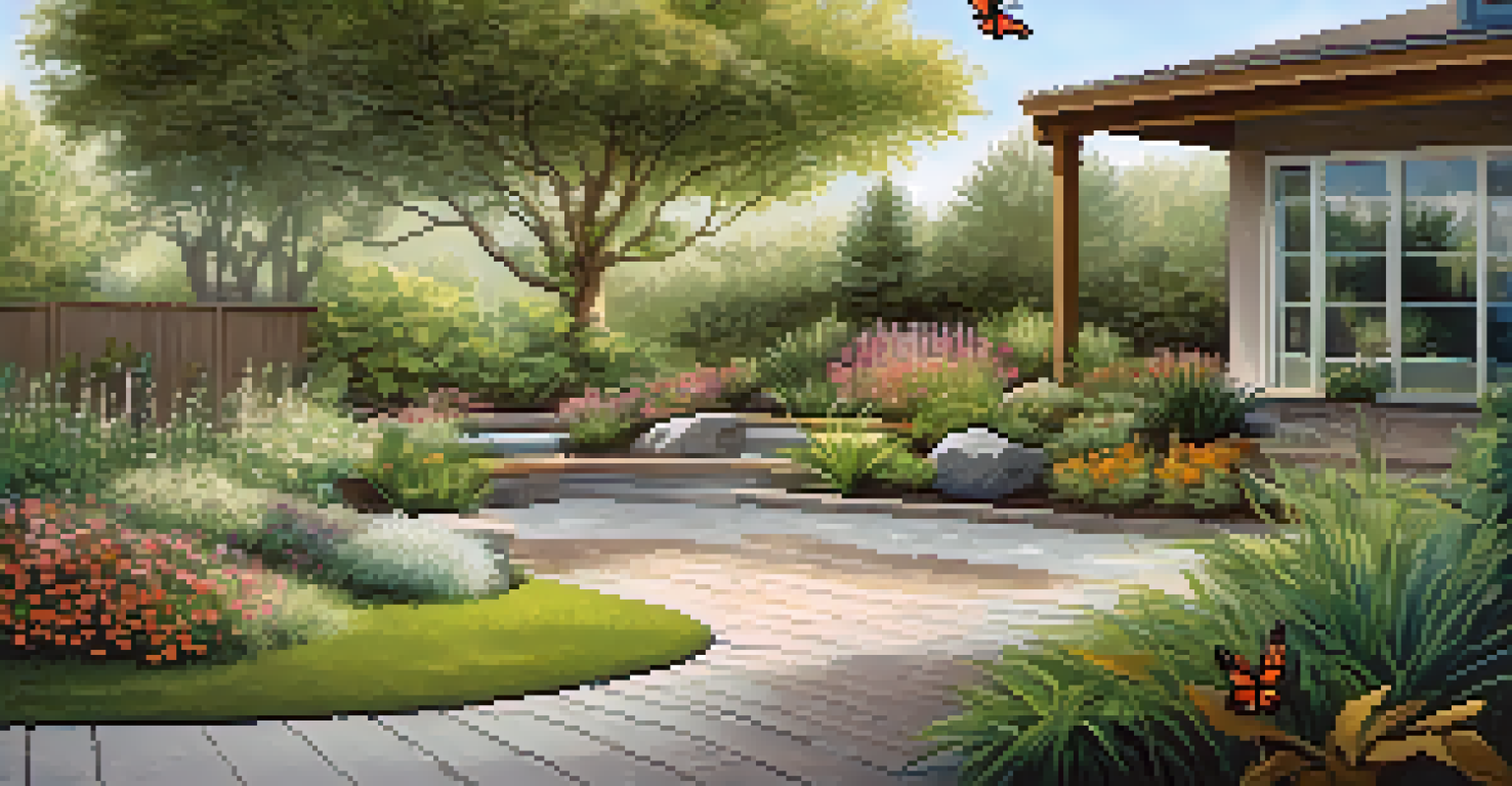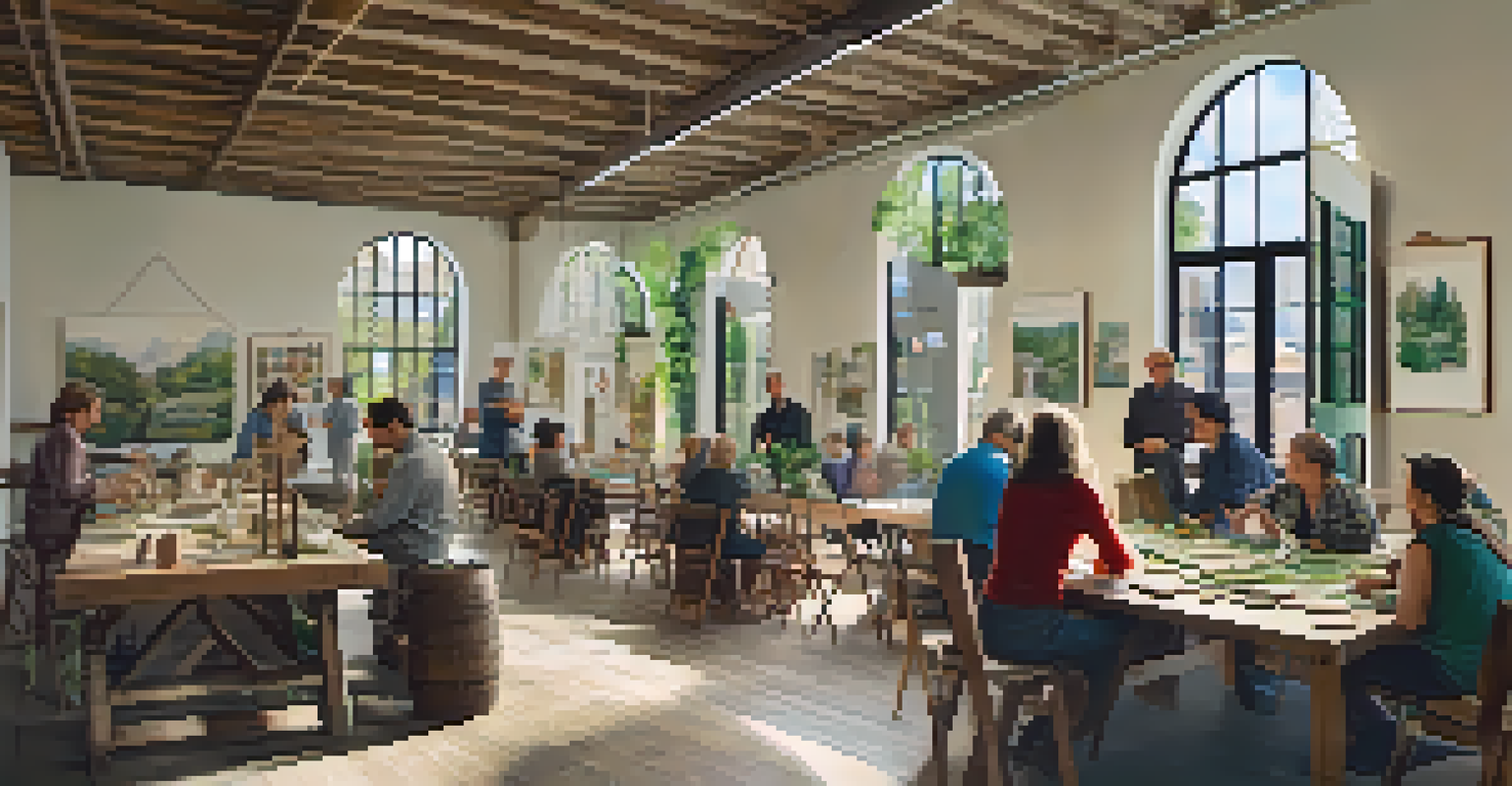Eco-Friendly Renovation Techniques for Historic Properties

Understanding the Importance of Eco-Friendly Renovations
Renovating historic properties can breathe new life into old buildings while maintaining their charm. However, incorporating eco-friendly techniques is essential for preserving our environment. By embracing sustainable practices, we can ensure that these properties not only stand the test of time but also contribute positively to the planet.
The greatest threat to our planet is the belief that someone else will save it.
Eco-friendly renovations help reduce energy consumption, lower utility bills, and minimize waste. This approach allows us to honor the past while paving the way for a greener future. Additionally, using sustainable materials can enhance the building’s historical character, making it an attractive option for both owners and potential buyers.
Ultimately, understanding the significance of eco-friendly renovations establishes a foundation for all subsequent decisions. This mindset encourages us to think about the long-term impact of our choices, ensuring that historic properties remain relevant and cherished for generations to come.
Choosing Sustainable Materials for Renovation
One of the most impactful ways to make renovations eco-friendly is by selecting sustainable materials. Reclaimed wood, for example, not only adds character but also reduces the demand for new timber. This practice helps preserve forests and supports local artisans who specialize in salvaging materials.

Moreover, consider materials like bamboo and cork, which are rapidly renewable and highly durable. These options can replace traditional materials without sacrificing quality or aesthetics. By making thoughtful choices about the materials we use, we not only honor the historic nature of the property but also contribute to a healthier planet.
Eco-Friendly Renovations Matter
Incorporating sustainable practices in renovations not only preserves historic properties but also contributes positively to the environment.
Finally, always look for materials that have low environmental impact and are sourced responsibly. Certifications like FSC (Forest Stewardship Council) can guide you in selecting products that are both beautiful and sustainable, ensuring that your renovation aligns with eco-friendly values.
Incorporating Energy-Efficient Systems
Integrating energy-efficient systems into historic properties can significantly reduce energy consumption. For instance, upgrading to high-efficiency HVAC systems allows for better temperature control while minimizing energy waste. This not only enhances comfort but also lowers energy bills.
Sustainability is not a destination; it's a never-ending process of continual improvement.
Another effective strategy is to invest in energy-efficient windows. These windows can preserve the historic look while improving insulation. Installing storm windows or using window films can also provide additional protection against heat loss, creating a cozy atmosphere without compromising the building's character.
By focusing on energy efficiency, we can elevate the performance of historic properties while respecting their original design. This balance between modern technology and historical integrity is key to achieving a sustainable renovation that benefits both the environment and its inhabitants.
Utilizing Renewable Energy Sources
Harnessing renewable energy sources is a game-changer for eco-friendly renovations. Solar panels, for instance, can be discreetly installed on rooftops, providing a clean energy source without detracting from the property’s historical aesthetics. This renewable energy can significantly offset electricity costs and reduce the overall carbon footprint.
Additionally, consider geothermal heating systems, which utilize the earth's natural temperature to regulate indoor climate. This method is efficient and can be a perfect fit for historic buildings where traditional heating may not be as effective. Such innovations showcase how modern technology can complement traditional architecture.
Sustainable Materials Enhance Value
Choosing sustainable materials like reclaimed wood and bamboo adds character to renovations while reducing environmental impact.
Incorporating renewable energy not only supports sustainability but also enhances the value of historic properties. By investing in these systems, you’re not just preserving history, but also ensuring that these buildings are equipped for a sustainable future.
Preserving Original Features During Renovation
One of the most crucial aspects of renovating historic properties is preserving their original features. Elements like moldings, flooring, and fireplaces tell the building's story and contribute to its charm. Careful restoration of these features can enhance the property’s character while aligning with eco-friendly goals.
Consider utilizing techniques such as patching rather than replacing damaged areas, which can save materials and costs. Professional restorers can often repair rather than replace, allowing the original craftsmanship to shine through. This approach not only respects the building’s history but also minimizes waste.
By prioritizing the preservation of key architectural elements, you can maintain the essence of the property while still implementing sustainable practices. This balance ensures that the building remains a testament to its history while adapting to modern-day eco-friendly standards.
Implementing Water Conservation Techniques
Water conservation is another vital aspect of eco-friendly renovations. Installing low-flow fixtures and dual-flush toilets can drastically reduce water usage without compromising functionality. These small changes can lead to significant savings on water bills while promoting sustainable living.
Additionally, consider rainwater harvesting systems. These systems capture and store rainwater for irrigation and other non-potable uses, reducing the demand on municipal water supplies. This practice not only conserves water but also supports landscape sustainability, enhancing the property’s outdoor appeal.
Community Engagement Boosts Impact
Involving the community in renovation efforts fosters shared responsibility and cultivates a culture of sustainability.
Incorporating water conservation techniques not only benefits the environment but also adds value to historic properties. By showcasing a commitment to sustainability, you can attract eco-conscious buyers who appreciate the thoughtful integration of modern conveniences into historical settings.
Creating Sustainable Landscaping Solutions
Landscaping plays a significant role in the overall sustainability of a property. Opting for native plants that require less water and maintenance can create a beautiful outdoor space while preserving local ecosystems. Native plants are well-adapted to the local climate, making them resilient and more cost-effective in the long run.
Additionally, consider incorporating permeable paving for driveways and walkways. This allows rainwater to seep into the ground, reducing runoff and promoting groundwater recharge. Such solutions not only enhance the property’s curb appeal but also address environmental concerns.

By creating sustainable landscaping solutions, you can complement the historic property while showcasing a commitment to eco-friendliness. This holistic approach to renovation ensures that both the building and its surroundings work in harmony with nature, promoting a healthier environment.
Engaging the Community in Sustainable Renovation Efforts
Engaging the community in your renovation efforts can amplify the impact of your eco-friendly practices. Hosting workshops or informational sessions about sustainable renovation techniques can inspire others to adopt similar practices in their projects. This collaborative approach fosters a sense of community and shared responsibility toward preserving history and protecting the environment.
Additionally, partnering with local artisans and suppliers can enhance the authenticity of your renovation. Supporting local businesses not only boosts the economy but also reduces the carbon footprint associated with transporting materials. This approach strengthens community ties and nurtures local craftsmanship.
By actively involving the community in these efforts, you can create a ripple effect that encourages sustainable practices beyond just your property. Together, we can create a culture of appreciation for both our historic heritage and our natural environment, ensuring a brighter future for all.